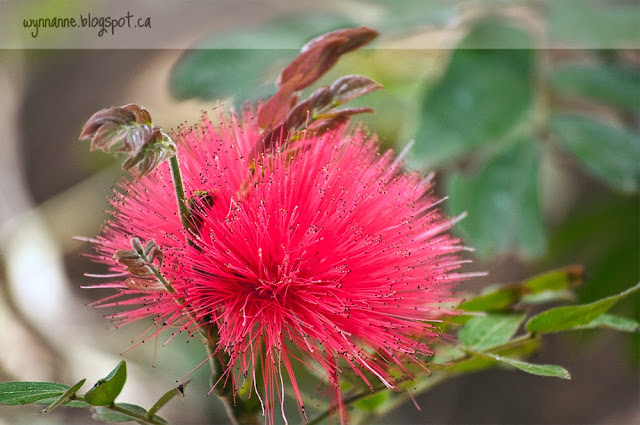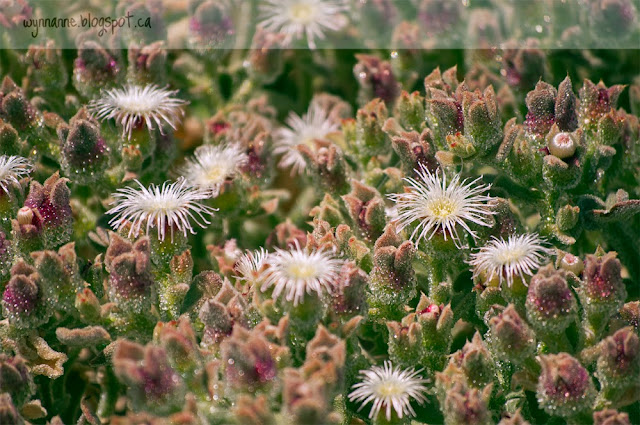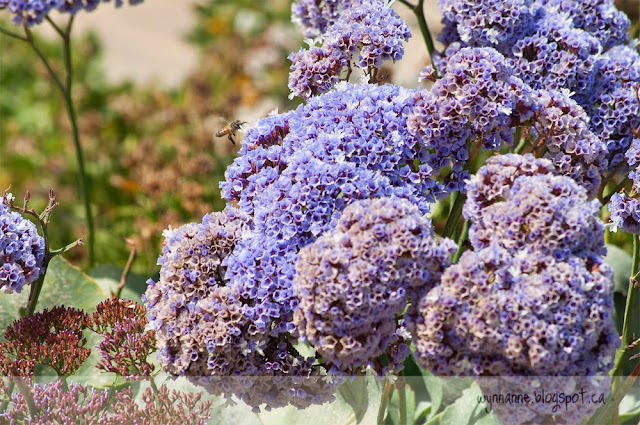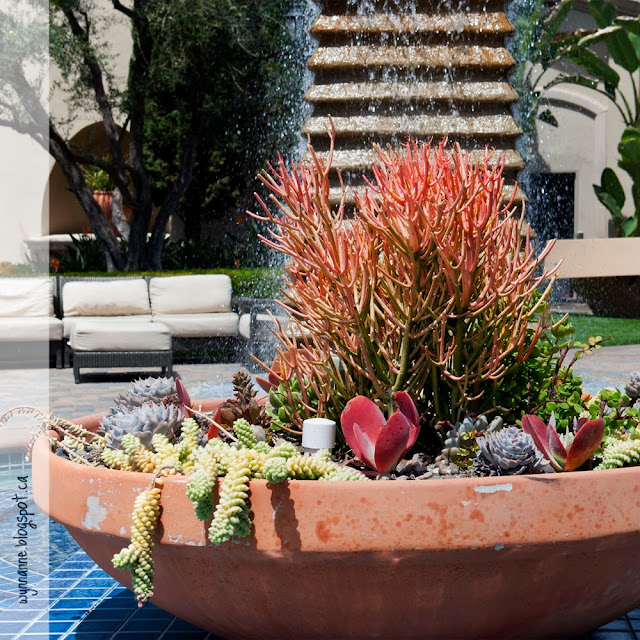 |
| The appropriately named "powderpuff" flower. |
Canadian winters are long and, in our region of Ontario, completely kill any and all flowers. By March, my eyes are hungry for those splashes of colour and vibrant life. On our trip to California, I was treated to a banquet of glorious flowers.
This post will be (mostly) wordless, except where I tell you the names of the plants, if I can find them.
WILD PLANTS
These were found in areas left wild -- not irrigated -- and are likely native to California. Most of them are succulents. I tried my best to identify them, but was overwhelmed by the great variety of such plants!
You may do your own sleuthing here.
 |
| Wild plant found in the chaparral (rough bush area) close to the beach. |
 |
| Cholla cactus flower |
 |
A succulent in either the ice plant or crassula family.
They remind me of anemones. You can see the droplets of water clinging to the hairs. |
 |
| Another plant in the same family. |
 |
| The leaves look like beans. |
AT THE RESORT
The grounds at our timeshare were irrigated, but most of the plants are, nevertheless, well suited to the climate. So many visitors to the resort (Newport Coast Villas) that guests may attend a "horticulture walk" which is run weekly. We did (of course).
Our guide began his spiel by saying, "I'm no botanist." And, sure enough, there were many, many plants that he could not identify. He also mentioned that southern California has a climate similar to the Mediterranean -- think Italy and Greece. Many of the plants are native to those regions.
 |
| I do not know what this plant is called. |
 |
| Mexican bush sage -- so velvety! |
 |
| Mexican bush sage |
 |
| Date palm buds |
 |
| Giant birds of paradise |
 |
| The more common "regular" bird of paradise. I have never seen their blooms in such perfect condition before. |
 |
| The coral-like succulent in the centre is call "fire sticks." |
 |
The Mexican coral tree. These did not seem to be thriving all that well
(most of the leaves were gone), but that may have been a seasonal thing. |
 |
| Eucalyptus trees have a distinctive "shedding" bark. |
 |
| A unique variety of agave that grows on a stem. |
 |
I could not find a name for this ugly-beautiful plant with leaves shaped like elephant ears and
a trunk that looks like a spinal cord. |
 |
| Pride of Madeira -- these make a lovely bush of purpley-blue flowers. |
 |
| Native to the Canary Islands, this tree looks like a child's drawing of a palm tree. Or something out of Dr. Seuss. |
 |
| A close-up of the dragon tree's fronds. Rather claw-like, aren't they? |
We also saw plenty of readily recognized plants and flowers: palm trees, irises, oregano, snapdragons, lavender, and geraniums, to name a few.
AT THE SAN JUAN CAPISTRANO MISSION































No comments:
Post a Comment
What did you think? Any comments?